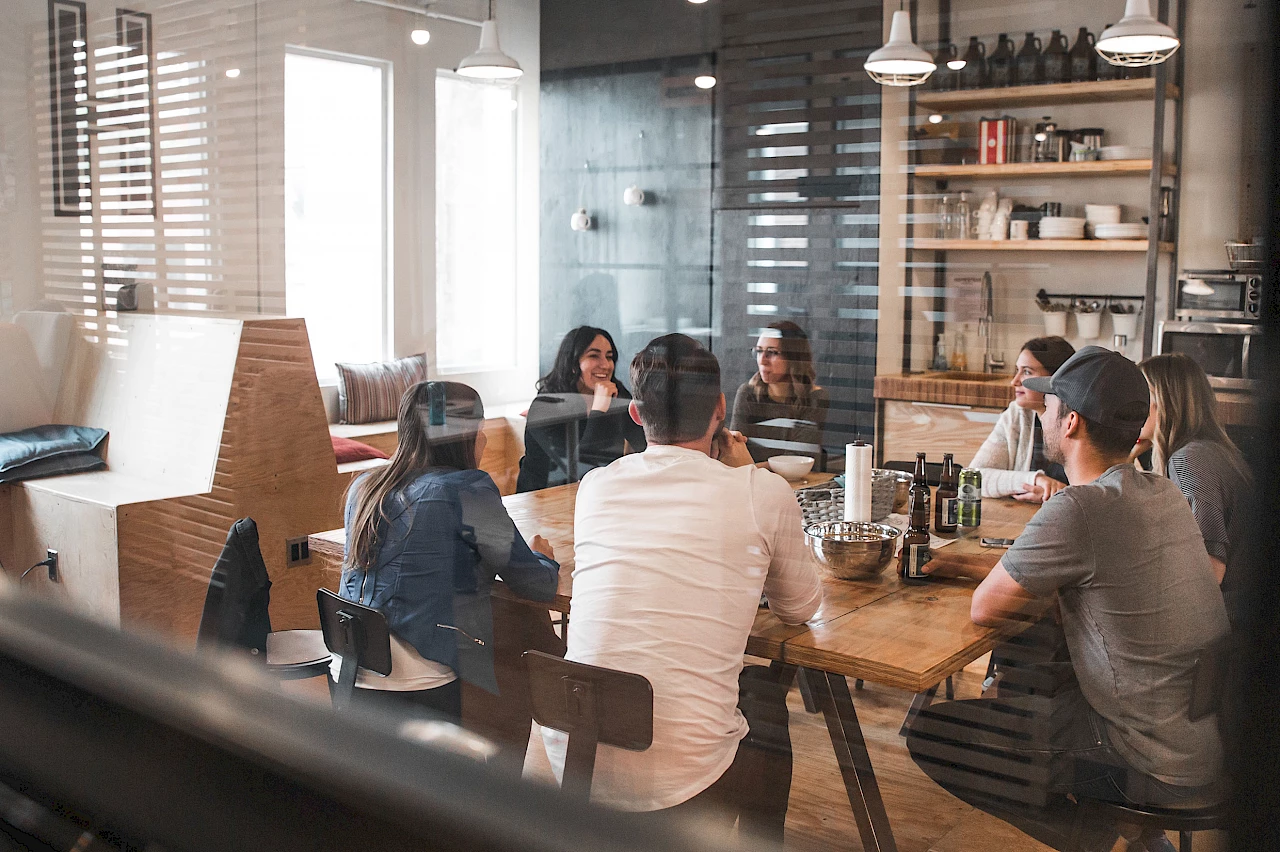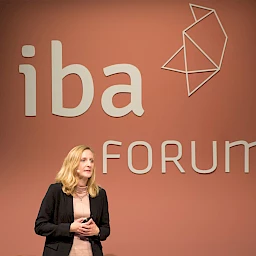Companies are facing the task of once again getting their employees enthusiastic about working in the main office. If the employees are to once again take on the burden of commuting along with its downsides, working in the office needs to be worthwhile by comparison to alternative places of work. But what aspects of working in the office do employees consider important? The IBA Forum has done some research and summarized a number of important findings.
Fraunhofer IAO: Space for sharing ideas
In “Homeoffice Experience 2.0”, a study based on a survey of 1,700 respondents and published in 2022, the Fraunhofer Institute for Industrial Engineering (IAO) addresses the most important factors that attract employees back to the office. The first reason to return was the opportunity to communicate with colleagues, collaborate with them and have informal conversations. The respondents said they still considered it important to have spaces for sharing ideas as well as quiet places where they can work on their own. The willingness to return to the office was almost identical in all age groups except for the group of respondents between the ages of 50 and 59, whose willingness was slightly greater. A further finding was that the technical and ergonomic equipment of the workstations in their homes had an influence on their willingness to return to the office. The worse their equipment at home was, the more workdays per month the respondents wanted to spend in the office. In its survey, the Fraunhofer IAO also identified other motivations for returning to the office. In addition to a good geographic location and good connections to the infrastructure, the availability of places to eat also plays an important role. The respondents regarded shared breaks and shared meals as an additional opportunity for contact with their colleagues.
Jones Lang Lasalle: Employer Value Proposition
According to the approximately 1,000 worldwide decision-makers who participated in the survey “JLL Future of Work Surveys 2022”, the office will continue to be a key element of the corporate ecosystem. 45 per cent of the respondents said that collaborative work and the availability of spaces suitable for it were major purposes of office premises. The respondents strongly believed that the quality of the available spaces would be a key determinant of how intensely they were used and thus how long the employees would stay in the office. What is needed are areas that promote innovation and creativity and make shared learning experiences possible. If the office is to score points compared to other places of work, it must promote the spontaneous sharing of ideas and provide opportunities for learning experiences. The office must be a place where people can gather experiences. It must have an inviting atmosphere and offer more than a traditional monitor-based workstation. In his talk for the IBA Forum at ORGATEC, Marco Huber, SVP Workplace Strategy DACH & CEE at Jones Lang Lasalle Work Dynamics, summed up the requirements for purpose-oriented offices in the concept of the Employer Value Proposition (EVP).
Fraunhofer IBP: The quality of space
In September 2022 the Fraunhofer IBP and the ORGATEC team of Koelnmesse conducted a study called “Raumwechsel” (Changing Spaces), which was based on an online survey of 1,004 employees in German companies with more than 50 employees. 34.8 per cent of the respondents were managers. The study focused on issues including room quality and the functions of places of work. This study came to the conclusion that the subjectively perceived room quality — including factors such as the rooms’ atmosphere, acoustics, lighting, privacy, workstation comfort, design and closeness to nature — influences the attractiveness of the office as a place of work and the motivation to go there. The respondents said that collaboration with colleagues, informal conversations and the opportunity to gain new ideas and inspiration are the most important functions of offices. However, if offices are to stay attractive, they must continue to fulfil all of the central functions of places of work. In other words, even if the office is designed with a stronger focus on communication and collaboration, these functions should not come at the cost of concentrated individual work. As a result, the “to-dos” for companies are clear: enhancing the perceived quality of rooms and developing offices as places for collaboration without giving up spaces for undisturbed and concentrated work.
Steelcase Global Research: Workplace atmosphere
According to the Global Report on the hybrid work environment published by Steelcase, what employees want most today is appreciation and a sense of being part of the company they work for. They believe that the office is an important place for putting values into practice and helping to shape a community that everyone feels part of. Offices embody the corporate culture of their respective company, and they clearly reveal what the company’s management considers important. With regard to workplace design, the authors of the report concluded that employees primarily want a change in the workplace atmosphere. The employees consider it important to have spaces that offer not only comfort and room for regeneration and well-being but also, above all, security and a feeling of control, as well as a sense of community and support for focused work and collaboration.
Gensler: Targeted, inclusive und cooperative
According to a study conducted by the design and planning firm Gensler, many companies are making it a priority today to bring their employees back into the office in order to improve the working culture as well as the employees’ performance and sense of loyalty to the company. Their main strategy for getting employees enthusiastic about their office workplace is to improve the workplace technologies (42 per cent). They are also offering more flexible working times in order to avoid peak-time commuting (46 per cent) and organizing shared experiences and events in the offices (39 per cent) to reinforce loyalty to the company. In order to continue being attractive as places of work, offices have to offer multifaceted, cooperative and inclusive work environments that support employees’ desire to use their office time purposefully. In terms of the use of space, this means providing employees with various types of workstations and work environments (65 per cent) as well as many different kinds of sitting options for different body shapes and sizes (66 per cent).






